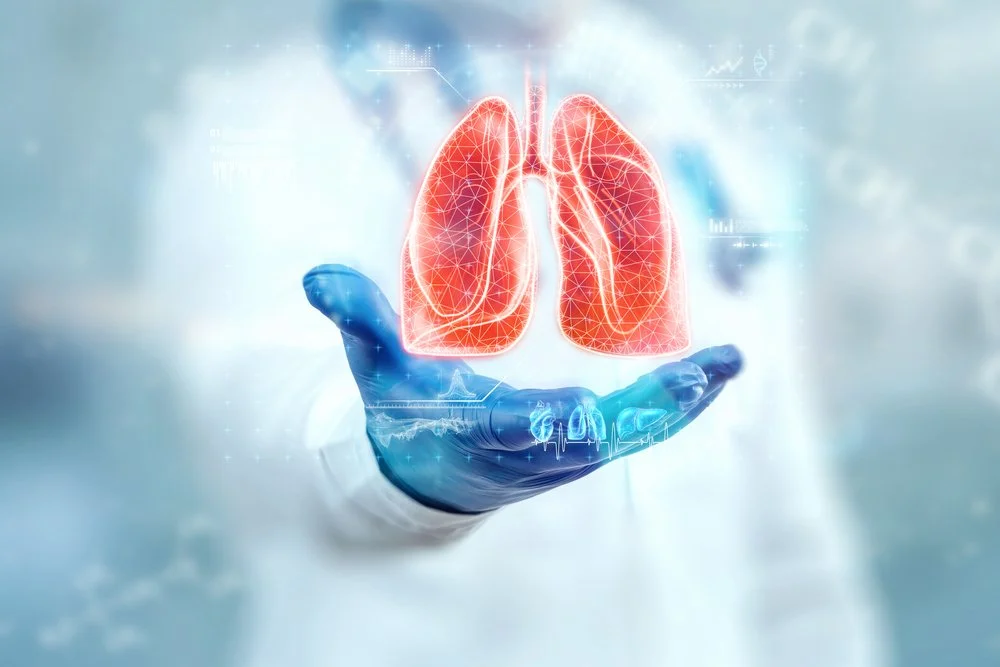Direct Lung Delivery of Gene Therapies for Lung Disease

Research into lung disease plays a pivotal role in understanding, preventing, and treating conditions that afflict an astounding 544.9 million individuals worldwide.
Through the use of nanotechnology, MIT researchers have created a ground-breaking nanoparticle system that can transport messenger RNA (mRNA) containing CRISPR gene-editing proteins to the lungs. This innovative technology shows great potential in the treatment of lung diseases, including cystic fibrosis, by specifically targeting and replacing defective genes.
These nanoparticles, comprising positively charged heads and extended lipid tails, demonstrate remarkable interactions with mRNA and easily pass through cell membranes, enabling precise and efficient gene editing in lung cells.
How Nanotechnology Aims to Solve the Problem
The primary objective of this technology is to address the treatment of different lung diseases, with a particular focus on cystic fibrosis. By employing advanced nanoparticle-based systems, this innovative approach aims to deliver messenger RNA (mRNA) directly to the targeted cells within the lungs. These nanoparticles, which are a cornerstone of nanomedicine, play a pivotal role in facilitating the delivery of therapeutic mRNA to address the underlying genetic mutations responsible for these debilitating lung conditions.
Innovative Solutions for Addressing Lung Disease Treatment
Led by MIT chemical engineer Daniel Anderson, the researchers involved in this groundbreaking study have made significant advancements in the field. They have successfully achieved efficient interaction with mRNA and effective traversal of cell membranes.
According to Bowen Li, one of the lead authors and an assistant professor at the University of Toronto: "This lipid can enable us to deliver mRNA to the lung much more efficiently than any other delivery system that has been reported so far."
Overcoming Barriers and Risk Factors in Nanomedicine and Drug Delivery
There are key challenges to address for this technology to succeed, including the development of stable nanoparticles that can be inhaled, ensuring efficient delivery of mRNA to specific lung cells, and demonstrating safety and effectiveness through rigorous clinical trials. These barriers require innovative solutions to enable effective gene editing for the treatment of lung diseases.
Market Size of Lung Disease Treatments
The market for lung disease treatments is significant, with cystic fibrosis alone affecting approximately 70,000 people worldwide. In 2022, the estimated market size for therapeutics addressing global lung diseases reached USD 81.2 billion, with a projected increase to over USD 146.1 billion by the year 2032.
Recent Investments
LifeArc and the Cystic Fibrosis Trust have unveiled an exciting £15 million research funding initiative focused on expediting the treatment of lung infections. This collaborative effort aims to foster innovation and the development of various solutions, including diagnostic tests, drug treatments, medical devices, and digital innovations.
Impact on Everyday Lives
This technology holds the potential to revolutionize the treatment of lung diseases by providing an inhalable, targeted approach to deliver gene-editing therapies. It offers hope for patients with cystic fibrosis and other genetic lung conditions by potentially correcting the underlying genetic defects and improving their quality of life.
Environmental Impacts
The ability to deliver gene therapies directly to the lungs through this nanoparticle-based system offers promising advantages. It reduces reliance on systemic treatments, minimising overall drug exposure and potential environmental implications. Targeting the affected lung cells enhances treatment efficacy while reducing the risk of side effects and off-target effects. This localised approach represents a significant step towards targeted and environmentally conscious therapies for lung diseases.
Future Impacts
In the coming years, this technology could revolutionise the treatment of lung diseases by providing a non-invasive, inhalable method for delivering gene therapies. With further development and refinement, it may become a viable clinical option, improving the lives of individuals affected by cystic fibrosis and other lung conditions.





